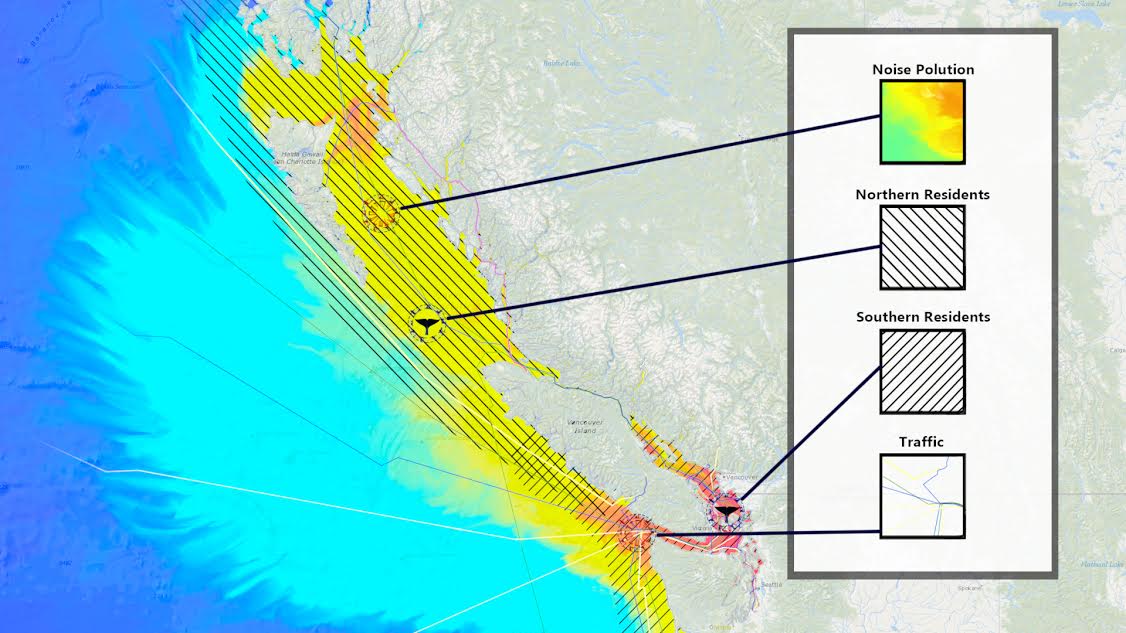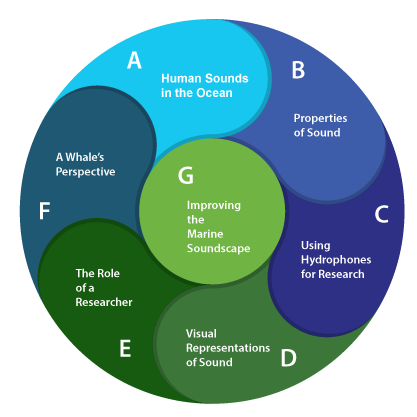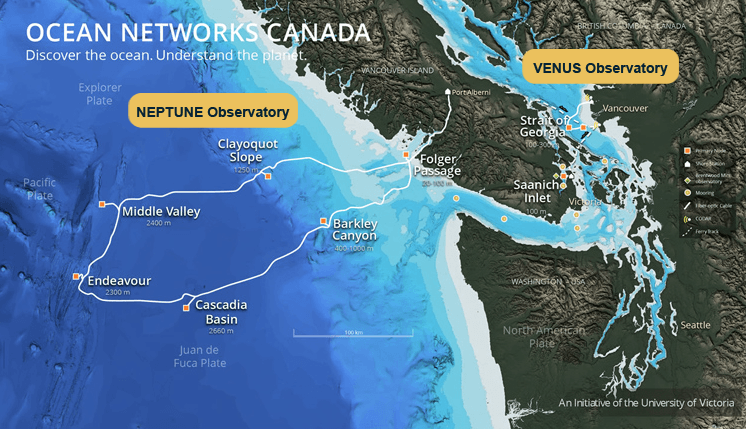Introduction to this Resource
Shouting Whales is a teacher resource for grades 6 to 8. It was developed jointly by Ocean Networks Canada and Open School BC in an effort to help teachers easily bring ocean science into the classroom. This package is intended to allow teachers to "plug in and play" an introductory inquiry unit in marine science, specifically in the fields of marine biology and acoustics.

This map depicts the overlapping ranges of harmful noise pollution and shipping traffic within the Northern and Southern Orca Whales' habitat, along the west of British Columbia.
Through this unit, students will investigate the science of sound as well as acoustical data collected by hydrophones on Ocean Networks Canada’s underwater observatories. Using this data and additional evidence, students will be asked to think critically about how whales experience the marine soundscape. The unit focuses on various human-made sounds in the marine environment, and asks students to extrapolate on how marine mammals (specifically killer whales) may function in their changing ecosystem.
This unit culminates with a student-lead project in which students are challenged to come up with an action plan to either inform, elicit action, or inspire legislation about the marine environment.
Key features:
• Free and fully downloadable – if you don’t have Internet access in your classroom, you can download each lesson package and access everything from your local drive • Comprehensive – contains all the media you need to implement the lesson plans as well as links to relevant websites, rubrics, student questions, and videos • Flexible – lessons can be presented in any order and can be used independently or as a complete unit • Adaptable – lessons and rubrics are provided in Microsoft Word format so they can be easily modified to suit your needs
This resource includes:
• A Teacher’s Guide (doc| pdf) containing a detailed overview of the unit, as well as a guide to the structure of the lesson plans
• Seven lesson plans that outline activities and projects you can do with your class
• Video interviews with researchers from Ocean Networks Canada, the University of Victoria and the Vancouver Aquarium that relate directly to the lesson topics
• Acoustical data (audio, spectrograms, and waveform diagrams) from the Ocean Networks Canada hydrophone array, including whale calls, ship noises, and other anthropogenic and natural sounds
• Relevant weblinks
• Assessment questions for each lesson

